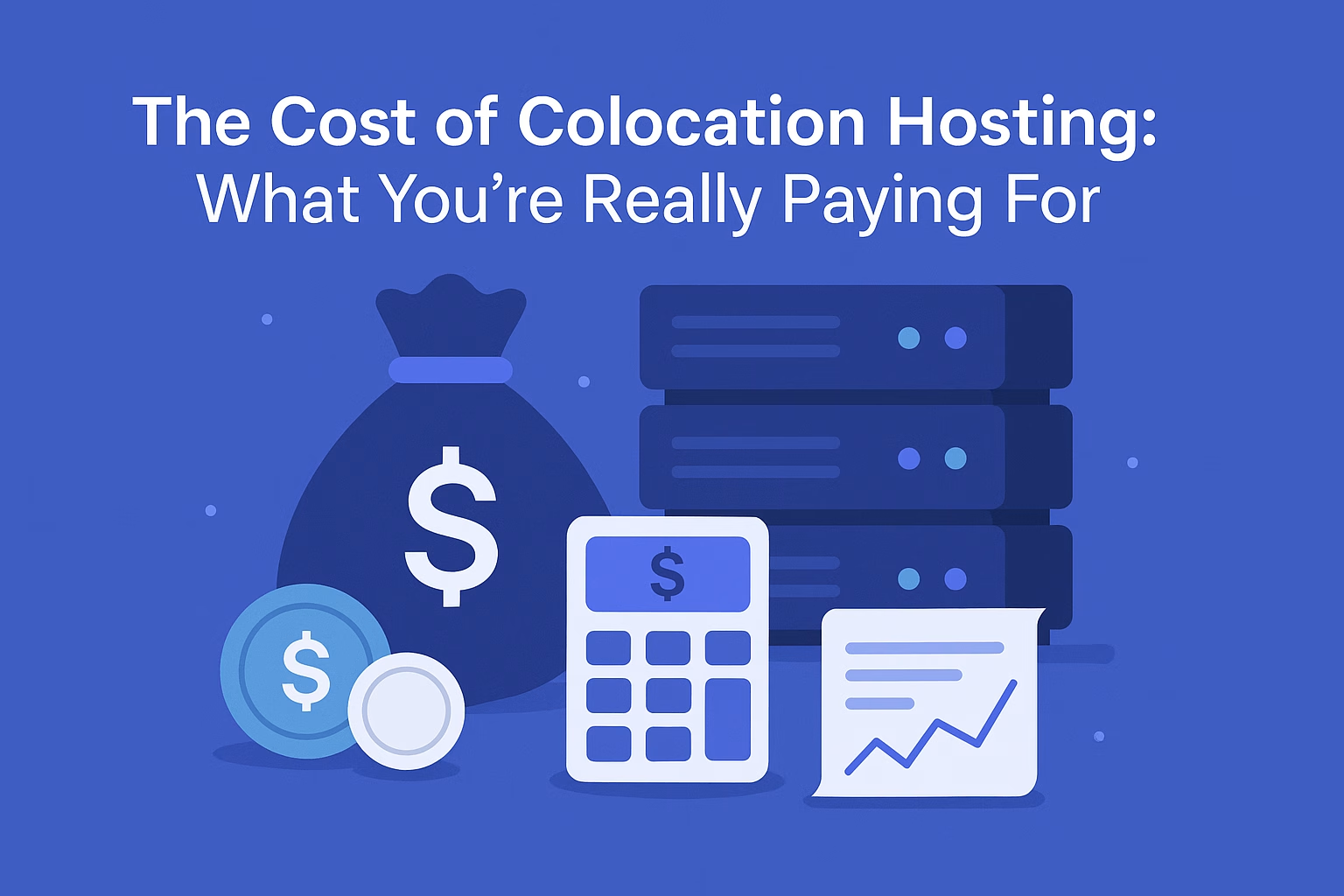Colocation hosting isn’t just about paying for rack space — it’s about outsourcing the cost of building and running your own secure, redundant, and high-performance infrastructure.
If you’re comparing colocation prices with shared, cloud, or dedicated hosting, you may wonder:
💭 “Why does colocation seem expensive up front?”
Here’s the truth: you’re not just renting space — you’re investing in enterprise-grade uptime, power, connectivity, and security — without having to build your own data center.
Let’s break down what you’re really paying for in a colocation hosting plan.
🧱 1. Rack Space (Physical Real Estate)
This is the most visible part of your invoice — measured in:
-
1U / 2U / 4U units (for single servers)
-
Half rack (21U)
-
Full rack (42U)
You’re renting a physically secured slot in a climate-controlled, professionally managed environment.
📦 You pay for the space your server occupies — including cooling and air circulation.
⚡ 2. Power Allocation
Server power consumption isn’t free — and it must be clean, stable, and redundant.
You’re paying for:
-
Continuous electricity supply (per amp or per kWh)
-
Backup via UPS (Uninterruptible Power Supply)
-
Diesel generators for extended outages
-
PDU (power distribution unit) usage in each rack
⚠️ Power redundancy is crucial — even a 1-second outage can cause damage.
🌐 3. Bandwidth and Network Connectivity
Colocation plans include a certain amount of data transfer or port speed:
-
Shared or dedicated uplinks (1 Gbps, 10 Gbps, etc.)
-
Monthly data quotas or unmetered plans
-
BGP routing, redundant carriers, low-latency peering
-
Public IP addresses (IPv4/IPv6)
💡 This is enterprise-level connectivity — not consumer broadband.
🔐 4. Physical Security
Your monthly cost also covers data center security and access control, including:
-
24/7 CCTV surveillance
-
Locked cages or cabinets
-
Biometric or RFID entry systems
-
On-site staff and visitor logging
-
Incident response protocols
🛡️ Peace of mind that your physical hardware is safe.
❄️ 5. Cooling and Environmental Management
Maintaining optimal server temperature is essential — and expensive to do on your own.
Your colocation fee helps cover:
-
Precision cooling systems (HVAC)
-
Hot/cold aisle containment
-
Humidity control
-
Environmental monitoring
❄️ Prevents overheating and extends hardware lifespan.
🛠️ 6. Remote Hands & Support
Most colocation providers (including PLiKhost) offer optional or included:
-
Remote reboot assistance
-
Hardware checks or reseating
-
Plugging in drives or cables
-
IP-KVM setup or diagnostics
🤝 It’s like having your own technician on-site — without needing to travel.
💽 7. Optional Add-Ons
You may choose to pay for additional services, such as:
-
Extra IP addresses
-
Offsite or local backups
-
Imunify360 or other security layers
-
Firewall appliances or VPN setup
-
Software licenses (cPanel, WHM, etc.)
🧩 Customize your colo stack based on your actual business needs.
🔄 8. Cost Comparison: Colocation vs Other Hosting
| Feature | Colocation | Dedicated Server | Cloud Hosting |
|---|---|---|---|
| Hardware Ownership | ✅ You own it | ❌ Provider owns it | ❌ Virtualized |
| Long-Term Cost | 💰 Lower over time | 💰 Medium | 💸 High (at scale) |
| Customization | 🔧 Unlimited | ⚙️ Limited | 🧱 Highly abstracted |
| Uptime Control | ✅ Physical level | ⚠️ Shared DC resources | ⚠️ Provider-controlled |
📉 Colocation is the most cost-efficient for stable, long-term workloads.
💡 Final Thoughts
Colocation hosting may seem like a big investment upfront — but what you’re really paying for is peace of mind, enterprise reliability, and full hardware control, all while avoiding the massive cost of building your own facility.
With PLiKhost, you get transparent pricing, expert support, and infrastructure trusted by growing businesses and IT professionals across Indonesia.
🟢 Explore PLiKhost Colocation Plans
Get the power of owning your own server — without managing your own data center.






